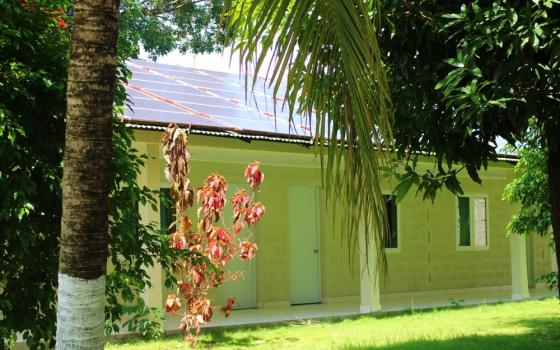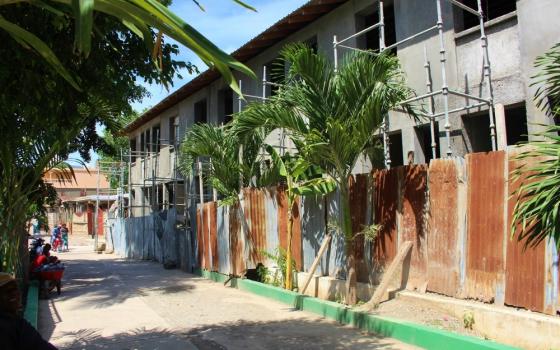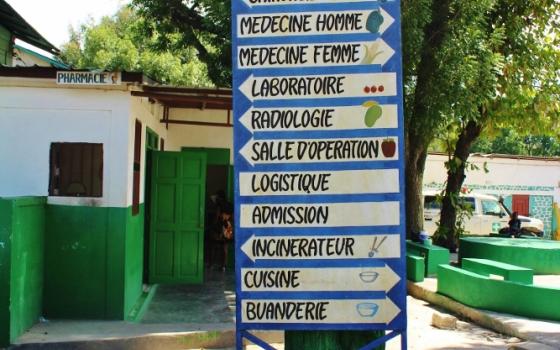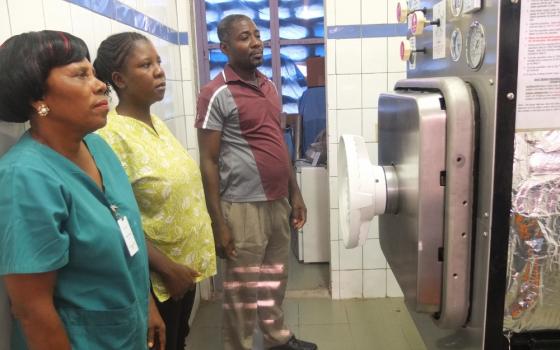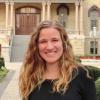Notes from the Field includes reports from young people volunteering in ministries of Catholic sisters. A partnership with Catholic Volunteer Network, the project began in the summer of 2015. This is our seventh round of bloggers: Viviana Garcia-Blanco is a Dominican Volunteer at the United Nations and Geri Lanham is a volunteer with the Religious of Jesus and Mary in Gros Morne, Haiti.
___
St. Claudine Thévenet, foundress of the Religious of Jesus and Mary, encouraged the sisters in her community to live this excerpt from the Pious Association of the Sacred Heart's Rule of Life: "When we go alone on a long and difficult journey, we soon grow weary ... on the contrary, when several go together, they walk with assurance, courage, and fresh support."
Bearing this in mind, St. Claudine sent the sisters out on mission, and the Religious of Jesus and Mary remain a mission community 200 years after their founding.
In Haiti, one of the present-day mission fields of the Religious of Jesus and Mary, it is imperative to journey with companions because the route is difficult. Haitians speak about moun pa m ("my people"), the people of their social network they can call upon to journey with them. These people may not be blood relatives, but based upon their shared journey, they have developed a strong kinship.
This journey of life with a social network is evident in health care in Haiti. When a person is sick, it takes the assistance of his or her social network to both find a health care solution and to continue the sick person's function within the family.
So many people work in the informal economy as market women or moto taxi drivers, for example, jobs that do not provide health insurance. So when a person is sick, it is up to the social network to piece together the resources to respond to the need. Many times, this means prioritizing whether the sick person really needs the four tests the doctor recommended or deciding whether it might be sufficient to purchase a generic medication from the pharmacy based upon the symptoms.
Hospitals, clinics and pharmacies in Haiti are all painted bright kelly-green and white to communicate to the population that the building serves as a health care center. In the county of Gros Morne, Hôpital Alma Mater is the only hospital for a population of 150,000. In comparison, my hometown in Illinois has one hospital for 30,000 people.
When the Religious of Jesus and Mary arrived in Gros Morne 20 years ago, Srs. Vivian Patenaude, Jacqueline Picard and Patricia Dillon lived in the old convent wing of this 64-bed hospital. Sister Jackie began a close working relationship with the hospital and has continued to support hospital projects to improve the quality of health care available in Gros Morne during her 20 years here.
Thanks to support from the parish of Pullach, Medicine for Peace and Centura Global Health Initiatives, the hospital is able to supplement staff salaries and offer services like a cervical cancer program and life-saving technology like incubators. Sister Jackie's work includes an emphasis on community health, which encompasses mountain clinics and community health agents and nurses to serve the more rural populations that find it difficult to make the trek down to the hospital but who need the vaccination services and health education offered by these health agents and nurses.
Some of my most memorable journeys in Haiti have been accompanying visiting medical mission teams as a translator into the rural countryside of Gros Morne county. The pain tolerance of the people who come to these mobile clinics is incredible. Patients will list the classic symptoms of malaria, then casually mention that they walked two hours to come to the clinic to see if the doctor might have a cure for them. When I had malaria, there is no way I could have walked more than 2 feet from my bed, yet these patients walked up and down mountain paths because they are hopeful they might find a solution to their ailment.
Translating what patients are feeling is a great responsibility. In creole, there are very descriptive words for instances like that icky feeling of blah that we just don't have an exact translation for in English, but the creole word fits the sensation of the symptom perfectly. There are other descriptors of symptoms, like a fever in the blood, that are not biomedical terms but are meant to lead the health care provider to the offending malady via further questions and tests.
Sometimes, the symptoms lead us to illnesses I never thought I would come into contact with. As a Midwesterner born in the '90s, mumps, diphtheria and tetanus are names of vaccinations in my mind, not diseases people contract. Yet I discover in these mobile clinics that they are still at large in the world, and they lurk in the mountains of Haiti, where the population does not have the convenience of a local health care center that provides vaccinations.
Hôpital Alma Mater has the capacity to deal with pneumonia, toothaches, tuberculosis, HIV and cholera, among many other things. But break a bone, and that means an hour trip down a dusty dirt road to Gonaives, the closest referral hospital with an orthopedic doctor.
Hôpital Alma Mater is undergoing a major renovation to better meet the needs of the people of Gros Morne. When it is complete, the hospital will have an eye clinic, a service that is not easy to find in the entire northern part of Haiti, and will also boast a new emergency room and operating suite, which will be attractive to recruit the best doctors possible out to the countryside.
The new wing of the hospital will provide a range of outpatient services to meet the needs of the many people who come to Hôpital Alma Mater searching for good-quality general health care that can greatly impact their quality of life. Having the capacity to efficiently diagnose and treat an illness is vital for the social network so people can get back on the road that they journey together.
[Geri Lanham lives in community with the Religious of Jesus and Mary in Gros Morne, Haiti.]

